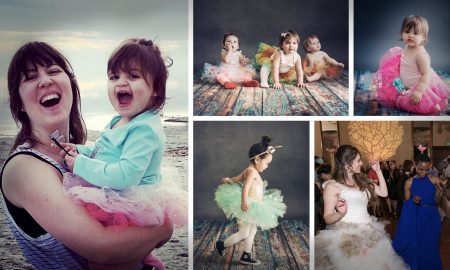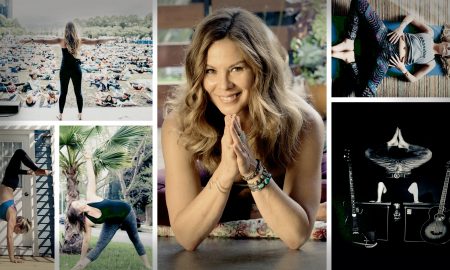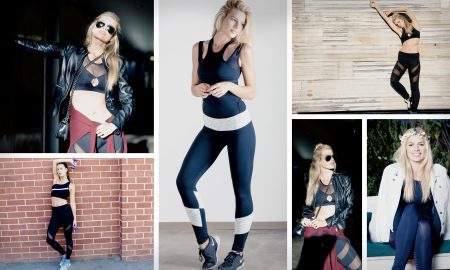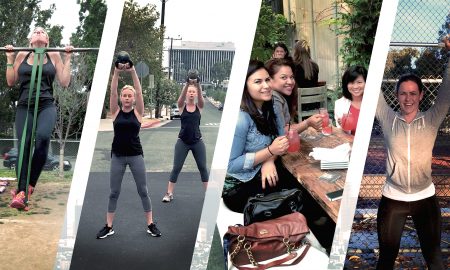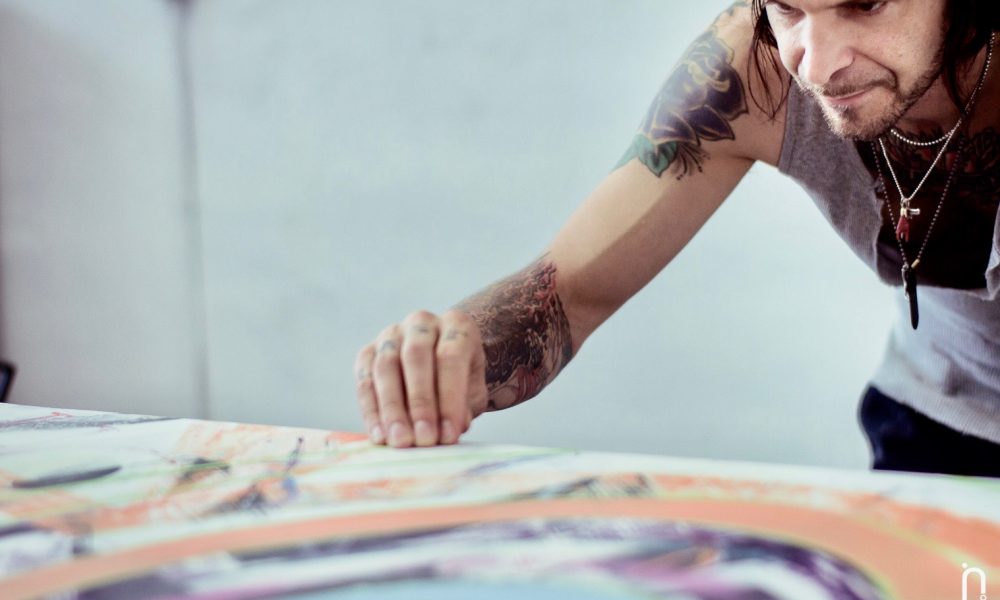

Today we’d like to introduce you to Michael John Spitaletto.
Every artist has a unique story. Can you briefly walk us through yours?
I was born an identical twin in Jersey City NJ. When we were children our family moved to a small town in NJ near the beach close to Asbury Park. It was a lot like most small towns where a lot of kids grow up playing recreational league sports then became involved in other activities like bikes and making BMX trails in the woods and riding skateboards and for some of us living nearer to the ocean, we got into surfing. A lot of us became good at either skating or surfing and several progressed into local skate competitions and others like myself began competing in the Eastern Surfing Association. It was around that time in my late teens I was really starting to notice all the graphics and illustrations and artwork related to those products. I thought it was really cool.
I would stare at skate decks and look at all the illustrations and names and words and colors, I’d hold a surfboard and wonder how they created them, the materials they used.
At around that time a lot of my family was involved in auto mechanics and machines and auto body and seeing the amount of hours and work that went into all of that I grew an appreciation for it. I’d see motorcycles and cars and look at their colors and designs and how people customized them and that was inspiring to see. Being not too far from NYC my friends and I would take the train into Penn Station and ride our skateboards and walk around and see all there is to see there especially when you’re young and from a small town, there’s a lot to see. We had other friends who shared the same interests so we’d go into the city and they’d show us around, taking us to small art galleries, museums, places to eat.
I took an art appreciation course at a community college I was attending. Part of the requirements for the course was to visit the Metropolitan Museum of Art and the Museum of Modern Art in NYC. I remember being amazed and overwhelmed at all of the artwork, all the different genres and styles, the paintings, the free-standing sculptures, relief sculptures, furniture design and the amount of history involved as well… works of art from all over the world with people expressing themselves through their chosen medium. Something in me clicked, it was inside of me… I felt a peace like a kindred spirit feeling being in there especially on days where it was less crowded and I could really see and take in the works before me.
I recall how different it felt to actually stand before a painting or sculpture, to be in the presence of a piece of work I’d beforehand only seen in a book. It was a completely different feeling altogether, a totally different experience. I could see technique, under-paintings, glazes, layers, tool marks, nuances that couldn’t be gathered from just a photograph of the work. The works themselves had life and emotion and expression and feeling and documented what the creator was experiencing while they were working and working to convey their mood, idea, technique, and approach to the viewer. I was drawn to abstraction as I had very little knowledge or experience with the visual art of that sort.
Forms being reduced to basic shapes, or focus being made simply on color and line and shape relationships and also works that had been purposefully devoid of emotional connection to it at all but instead focused attention to the surface treatment and materials used. Seeing and experiencing and viewing works from Willem De Kooning, Robert Motherwell, Franz Kline, Frank Stella, Ellsworth Kelly, Barnett Newman and Mark Rothko, Wassily Kandinsky, Marc Chagall, Joan Miro, Cy Twombly, Richard Diebenkorn, Helen Frankenthaler, Henry Moore, Barbara Hepworth, Kurt Schwitters made me realize that fine art existed far beyond portraits and plen-air painting and still life studies.
I later attended Flagler College, a four-year college where I chose to further study fine art. My twin had opted to pursue writing which had different requirements for enrollment than where I was going and for the first time we were separated from each other. It was very difficult going from sharing a womb than a room to being over 1000 miles away. When I had graduated college my twin had already moved to Los Angeles and was living around the Venice Beach area and later Hollywood. The bond between my twin and I was very strong so upon my completion of studies I chose to be in the friendlier weather in California near my twin.
Everything was so expensive, the cost of living was a lot for us. We shared a tiny bachelor studio and had random part-time jobs and really struggled to make ends meet. It was very difficult. Our place was so tiny we wound up throwing away or giving away or donating whatever we could to save space including our surfing trophies from our years competing in the Eastern Surfing Association which I regret getting rid of the most. I had shipped some of my paintings from college to Los Angeles and due to the cost of everything I hadn’t the funds to purchase new supplies and materials so I would just paint on top of the paintings I had shipped, revising them or reworking them all together.
Over the years I’d met artist Timothy Williams who operated Black Cat Gallery on Washington Boulevard in Culver City. I began exhibiting my work there when I could, getting involved when I could and dividing my time between fine art and working in the film industry as a set painter. My twin was working as a set lighting technician and becoming interested in photography and still pursuing writing when he could. I learned a lot as a set painter from properties of paints to tools and equipment and materials and combined that with what I learned back in college mainly the principles of unity, rhythm, balance, and harmony within a completed work of art. I would also try to learn what I could by watching and speaking with painters, prop-makers, carpenters, laborers, welders and any other craftsperson when I could.
In mid-March of 2005, my identical twin had died unexpectedly from cryptococcal meningitis. The circumstances of his death and being present with him as he died both shattered and altered life as I’d known it. Life became exceedingly difficult. The simplest of tasks had become tremendous obstacles. I had encouragement from others to focus on painting. To use that form of expression as an outlet… and I did. In the past, I had worked in several different painting styles without much recognition. Those ranged from representational forms and shapes, people, objects, etc, then I began incorporating words in the paintings only to abandon that and look more at geometric abstraction.
I began experimenting with different approaches to working with the medium of paint using non-conventional tools and equipment not generally associated with creating a painting. I’d seen others involved in graphic design working in ‘layers’ in Photoshop and it triggered something in me about the layers of paint reflecting layers of our personality. I’d seen layers of paint being removed and added on everything from old automobiles, motorcycles, appliances, buildings and walls of homes and businesses and it caused me to think about things like who owned that, or lived there, or drove that when those objects were those colors. If the colors could speak what stories would they tell? What memories did they possess?
It wasn’t really until I began working in my current style that I began to gain some attention from several established Southern California artists as something different, something new, something unique. I’d entered non-juried exhibits ranging in art walks in Echo Park and El Segundo to fundraisers for various organizations in and out of California to juried exhibits with Saatchi art to placing first in the 50th Newport Beach Art Exhibition and having a solo exhibit at Holly Socrates Gallery in El Segundo California. The rest is the present.
Please tell us about your art.
I make abstract paintings by working in layers of paint on wooden panels. I build up layers of paint of varying colors incorporating words and shapes and obscuring them by adding additional layers of paint. Then I sand those layers of paint to partially expose the under colors being cautious to not remove to much of the paint so as to avoid having to rework the piece. Since using a sander as a tool in a painting is not a conventional or delicate practice different types of sandpaper are used at different stages of the painting to achieve a desired result. Simply put I wanted to create a new type of work using tools I’m familiar with and have experience using.
For many years I’d seen a lot of new and impressive work coming out to the degree where it seems many new art movements have developed since I graduated college. All the work I was viewing from others was done exceptionally well with great skill. I was meeting with one artist at the time who knew the art scene quite well and he’d coach me along through various stages of my painting being familiar with some of the other styles I’d worked in as well as himself being familiar with the styles others were working in. I’d show him a painting I’d finished and one critique he made stung but stood out to me… his comment regarding my past work was, “it’s good but it’s nothing new”.
That comment floated in my thoughts borderline tormenting me while I was working in one of those previous styles. So I pulled out all the stops and threw everything I had in me at the surface I was working on… My thought was ok… great… that’s gonna be really difficult in this day and age… I said to myself, “I have to develop a process or method that isn’t familiar to the masses as being associated with painting and a reason behind the work as well.” Looking back I gather that comment was meant to motivate me. I spent a lot of hours wrestling with thoughts and ideas as well as arguing with the panel itself in which I was working on… Although the comment stung it caused me to create and develop an approach to painting that could be my own and to further develop a framework of thought supportive of my work.
The challenge involved in working the piece is coming up with certain color combinations and hard-edged shapes and lines that will visually balance the visual degree or intensity or triviality conveyed by the word or words used in the work. A verbal vs. visual balance within the composition is the challenge. The ‘look’ of the finished piece of art although visually inspired by worn walls and weathered layers of paint in actuality and within the painting are representative of our layers of thinking. I liken the blurred and weathered aspect of my paintings to our dream state or our ideal self-state and the hard edge shapes are the requirements of the waking world with its schedules and requirements and regulations. The thought being along the lines of “how do we as people bring these dreams, these notions and ideas into reality?”
At the time I was creating some of those paintings I was also enjoying a lot of motorcycle riding with a talented group of guys. We spent a lot of time looking at maps so that further added to the element of getting places, bringing things from point A to B, ideas into actuality into reality and the unknown into the known. The intent with my work is to purposefully not create something so easily recognizable nor understandable, to allow the viewer to draw their own conclusions to allow an element of viewer participation. I didn’t want to create something so concrete and inflexible in its intended message. There are deeper meanings to many of the works with a bit of whimsy and sarcasm included at times and those who can relate will understand. I also wanted the work to be visually interesting.
The work itself is a personal expression of a culmination of hopes and dreams of past and present occurrences and events being considered in modern times as thoughts and ideas change as new information is brought to us through social interaction, science, technology, exploration and research of ourselves and the world around us and how we relate to it.
What do you think is the biggest challenge facing artists today?
Finding gallery representation is one of them as well as finding an affordable space to work. Other challenges involve networking, marketing, and promoting the work. Things like getting it seen by others who will find it interesting and to their appreciation which is why I’m very grateful for this opportunity with VoyageLA.
How or where can people see your work? How can people support your work?
Currently, I don’t have gallery representation. I have select paintings available online for purchase through Saatchi art’s website. Also available are art prints framed and unframed and accessories ranging from art items to apparel to home decor and more available online through Society6 and RedBubble.
Contact Info:
- Website: https://www.saatchiart.com/michaeljohnspitaletto
- Instagram: https://www.redbubble.com/people/-mikespit-
- Facebook: https://www.facebook.com/mspitalettoart/
- Twitter: https://twitter.com/MSPITALETTO
- Other: https://society6.com/mspitaletto








Image Credit:
John Nierras, Iris Scott, Michael Spitaletto, Dena Stitt, Hillary F Brown
Getting in touch: VoyageLA is built on recommendations from the community; it’s how we uncover hidden gems, so if you know someone who deserves recognition please let us know here.


